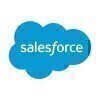Salesforce Developer
50+ Salesforce Developer Interview Questions and Answers for Freshers

Asked in Cloud SynApps

Q. You are designing a high-traffic public-facing Experience Cloud site (formerly Community Cloud) used by both authenticated and guest users. The site supports user registration, complex forms with conditional lo...
read moreStrategy for securing and optimizing a high-traffic Experience Cloud site.
1. Use Profile and Permission Sets to restrict guest user access to specific objects and fields.
2. Implement Sharing Rules and Field-Level Security to ensure unauthorized records are not accessible.
3. Utilize Apex Managed Sharing for dynamic record sharing based on user context.
4. Leverage Lightning App Builder to create conditional navigation based on user roles and profiles.
5. Use Dynamic Forms to sho...read more

Asked in Cloud SynApps

Q. You are tasked with writing an Apex Trigger on a custom object (Project__c) with the following complex requirements: 1. On insert/update, check for related Task__c records and automatically clone any "template...
read moreDesigning an Apex Trigger for Project__c with complex requirements and scalability.
Use the TriggerHandler pattern for separation of concerns and maintainability.
Implement a static variable to control recursion and prevent infinite loops.
Utilize custom permissions to check user access before updating Status__c.
Aggregate values from related Project__c records to update the parent Account.
Design the trigger to handle bulk operations by processing collections of records.

Asked in Cloud SynApps

Q. You're asked to build a scalable, enterprise-level Flow solution that supports: 1. Dynamic form rendering based on user input and record type (similar to OmniScript logic). 2. Modular, reusable subflows for sha...
read moreDesign a scalable Flow solution for dynamic forms, modular subflows, and robust error handling in Salesforce.
Utilize dynamic forms with conditional visibility based on user input and record type to enhance user experience.
Create modular subflows for common tasks like validation and record creation, allowing reuse across multiple flows.
Implement complex decision trees using 'Decision' elements and asynchronous actions like 'Send Email' and 'Platform Events'.
Incorporate error h...read more

Asked in Cloud SynApps

Q. You're designing a complex OmniScript that dynamically renders form sections based on user role and previous inputs, integrates with external REST APIs (requiring OAuth2.0 authentication), and posts data to mul...
read moreDesigning an OmniScript for dynamic rendering, API integration, and data persistence in Salesforce.
Use conditional steps in OmniScript to show/hide sections based on user role and previous inputs.
Create reusable components for common UI elements to maintain consistency and reduce redundancy.
Implement integration procedures with error handling using Apex for OAuth2.0 authentication.
Utilize 'DataRaptor' to map and persist data to multiple Salesforce objects, ensuring relationsh...read more

Asked in Deloitte

Q. Describe a scenario where you would create a one-to-one relationship in Salesforce.
To create a 1 to 1 relationship in Salesforce, use a lookup field on the child object pointing to the parent object.
Create a lookup field on the child object that references the parent object.
Ensure that the lookup field has a unique constraint to enforce the 1 to 1 relationship.
Use validation rules or triggers to prevent multiple child records from being linked to the same parent record.
Asked in Parim Infocomm

Q. What is power electronics, what is the architecture of the ic2716
Power electronics is the application of electronics to control and convert electrical power.
Power electronics involves the use of semiconductor devices such as diodes, transistors, and thyristors to control and convert electrical power.
The architecture of the ic2716 is a 16Kbit EPROM (erasable programmable read-only memory) with a 24-pin DIP (dual in-line package) configuration.
The ic2716 is commonly used in microcontroller and embedded systems for storing program code and da...read more
Salesforce Developer Jobs




Asked in Cognizant

Q. How do you call a child component from a parent component in Lightning Aura?
To call child to parent in Lightning aura, use events and event handlers.
Create an event in the child component
Register the event in the parent component
Create an event handler in the parent component
Fire the event from the child component
Handle the event in the parent component
Pass data between the child and parent components using event attributes

Asked in TCS

Q. Given a set of objects, such as Case and Account related with a lookup, how would you find the number of cases associated with a specific account using best practices?
Count the number of cases related to an account using SOQL and best practices in Salesforce.
Use SOQL to query the Case object with a WHERE clause filtering by the AccountId.
Example: SELECT COUNT() FROM Case WHERE AccountId = '001XXXXXXXXXXXX'
Consider using aggregate functions for efficiency.
Ensure proper indexing on the AccountId field for faster query performance.
Use a trigger or process builder if you need real-time updates on case counts.
Share interview questions and help millions of jobseekers 🌟


Asked in Salesforce

Q. Tell me about Asynchronous Apex? Difference between Batch Apex and Queueable Apex
Asynchronous Apex allows you to run processes in the background, without user interaction. Batch Apex and Queueable Apex are two types of Asynchronous Apex.
Asynchronous Apex allows you to process large amounts of data asynchronously, without impacting the user interface.
Batch Apex is used to process large data sets that can be divided into smaller batches for processing.
Queueable Apex allows you to submit jobs for asynchronous processing, similar to future methods but with mo...read more

Asked in Capgemini

Q. Tell me about trigger Governor limit Soql sosl Relationship in Salesforce
Triggers are code that execute before or after specific events occur in Salesforce. Governor limits are limits on resources that a single transaction can consume. SOQL and SOSL are query languages used to search for data in Salesforce. Relationships define how objects are related to each other in Salesforce.
Triggers are used to automate processes in Salesforce
Governor limits prevent a single transaction from consuming too many resources
SOQL is used to search for data in a sin...read more

Asked in Salesforce

Q. Explain Future method? and why we need (Callout= true) along with that annotation?
Future method is used to run code asynchronously. Callout=true is needed to make HTTP callouts from future methods.
Future methods are used to run code asynchronously in Salesforce.
They are annotated with @future annotation.
Callout=true is needed to make HTTP callouts from future methods.
Without Callout=true, making HTTP callouts from future methods is not allowed.

Asked in Capgemini

Q. What is the difference between profiles and permission sets?
Profiles define user's access to objects and fields while permission sets grant additional permissions to users.
Profiles are assigned to users and define their access to objects, fields, tabs, and other features.
Permission sets are used to grant additional permissions to users without changing their profiles.
Profiles are used to restrict access while permission sets are used to grant access.
Profiles are used to define the baseline access while permission sets are used to exte...read more

Asked in TCS

Q. In Batch Apex, detail the interfaces. How do you send a notification to the batch owner with record details?
Batch Apex allows processing large volumes of records asynchronously in Salesforce, and notifications can be sent to batch owners.
Implement the Database.Batchable interface to create a batch class.
Use the finish method to send notifications after batch processing is complete.
Utilize Messaging.SingleEmailMessage to send email notifications.
Example: In the finish method, query the batch job details and send an email to the batch owner.
Consider using Platform Events or Custom No...read more

Asked in Celebal

Q. What is Salesforce crm, Salesforce Development roles, roles and profiles?, Write a trigger in apex programming language?
Salesforce CRM is a cloud-based platform for managing customer relationships, while development roles focus on customizing and extending its capabilities.
Salesforce CRM helps businesses manage customer interactions and data throughout the customer lifecycle.
Salesforce Development roles include Salesforce Developer, Administrator, and Architect, each with specific responsibilities.
Roles define what users can do in Salesforce, while profiles determine the level of access and pe...read more

Asked in Celebal

Q. What are reports and dashboards?, when to use flow and when to use apex trigger?
Reports and dashboards visualize data in Salesforce; flows automate processes, while Apex triggers handle complex logic.
Reports are structured summaries of data, while dashboards provide visual representations of multiple reports.
Use reports to analyze sales performance, e.g., a report showing monthly sales by region.
Dashboards can display key metrics like total sales, opportunities, and lead conversion rates in one view.
Use Flow for simple automation tasks, like sending an e...read more
Asked in Metadologie

Q. How do you prevent recursive triggers in Salesforce?
Preventing recursive triggers in Salesforce involves using static variables and trigger context variables.
Use static variables to track if a trigger has already executed. Example: static Boolean isExecuted = false;
Check the static variable at the beginning of the trigger. If true, exit the trigger to prevent recursion.
Reset the static variable after the trigger execution is complete to allow future executions.
Utilize trigger context variables to determine the trigger's contex...read more

Asked in Deloitte

Q. What is the difference between Queueable Apex and Future Apex?
Queueable is used for asynchronous processing while future apex is used for executing code in a separate thread.
Queueable is used for complex, long-running processes that can be split into multiple jobs.
Future apex is used for short, quick processes that need to be executed in a separate thread.
Queueable jobs can be chained together to run in a specific order.
Future apex methods are limited in terms of governor limits compared to Queueable jobs.

Asked in BYJU'S

Q. What is the full form of BDA?
BDA stands for Big Data Analytics.
BDA refers to the process of examining large and complex data sets to uncover patterns, correlations, and insights.
It involves using various techniques and tools to analyze data and make informed business decisions.
Examples of BDA include analyzing customer behavior data to improve marketing strategies or analyzing financial data to identify potential risks.
Asked in Groviya

Q. Write a trigger to calculate the sum of total opportunity amounts and populate it on the parent account.
Trigger to sum Opportunity amounts and update the related Account's total amount.
Create an 'after insert' and 'after update' trigger on the Opportunity object.
Use a Map to aggregate Opportunity amounts by Account ID.
Query the Account records to update the total amount field.
Example: If an Opportunity with amount $5000 is created, add it to the Account's total.
Ensure to handle bulk operations to avoid governor limits.
Asked in Metadologie

Q. What is Apex and how is it different from Java?
Apex is a strongly typed, object-oriented programming language for Salesforce, similar to Java but tailored for cloud applications.
Apex is specifically designed for the Salesforce platform, while Java is a general-purpose programming language.
Apex runs on Salesforce's servers, allowing for seamless integration with Salesforce data and services.
Apex has built-in support for database operations, such as SOQL and SOSL, which are not present in Java.
Apex is executed in a multi-te...read more

Asked in TCS

Q. Write a SOQL query to retrieve parent-to-child and child-to-parent records.
SOQL queries can retrieve parent-to-child and child-to-parent records using relationship queries.
Parent-to-Child: Use subqueries to retrieve child records. Example: SELECT Name, (SELECT LastName FROM Contacts) FROM Account
Child-to-Parent: Use dot notation to access parent fields. Example: SELECT LastName, Account.Name FROM Contact
Ensure proper relationship names are used in queries based on the Salesforce schema.
Subqueries can only be used in the SELECT clause of the parent o...read more

Asked in Accenture

Q. How do you write conditional statements in Salesforce?
Conditional statements in Salesforce logic control the flow based on specific criteria.
Use 'if' statements to execute code based on a condition. Example: if (x > 10) { // code }
Utilize 'else' to define an alternative action if the 'if' condition is false. Example: if (x > 10) { // code } else { // alternative code }
Implement 'else if' for multiple conditions. Example: if (x > 10) { // code } else if (x < 5) { // alternative code }
Use 'switch' statements for multiple possible ...read more

Asked in TCS

Q. in lwc, frameworks and best practices,pagination in lwc
Pagination in LWC involves using frameworks and best practices to efficiently display large sets of data.
Use Lightning Data Service to fetch data efficiently
Implement server-side pagination to reduce load times
Consider using third-party libraries like Lightning Datatable with Infinite Scrolling
Optimize queries and data retrieval to improve performance

Asked in Salesforce

Q. Can you explain Platform Events?
Platform Events are a feature in Salesforce that allow developers to deliver secure, scalable, and customizable event notifications.
Platform Events are based on the publish-subscribe model, where publishers send events and subscribers receive them.
They are used to communicate changes in Salesforce data or custom events within an organization.
Developers can define custom event objects and trigger events using Apex or declaratively through Process Builder or Flow.
Subscribers ca...read more
Asked in ABCC

Q. What is OWD in Salesforce?
OWD stands for Organization Wide Default. It is a security setting in Salesforce that defines the default level of access to records.
OWD can be set for different objects in Salesforce
It determines the default access level for records created in that object
OWD can be set to Private, Public Read Only, Public Read/Write, or Controlled by Parent
For example, if OWD for Accounts is set to Private, only the record owner and users with higher access can view/edit the record

Asked in Inno Valley Works

Q. Patterns using c program
C programs can use various patterns for solving problems. Some common patterns include iterative, recursive, and functional.
Iterative pattern involves using loops to repeat a set of instructions until a condition is met.
Recursive pattern involves breaking down a problem into smaller sub-problems and solving them recursively.
Functional pattern involves using functions to perform specific tasks and combining them to solve a larger problem.
Other patterns include object-oriented,...read more

Asked in Salesforce

Q. Data Security in Salesforce and types in it.
Data security in Salesforce involves various types of security measures to protect sensitive information.
Salesforce provides various security features such as user authentication, data encryption, and access controls.
Types of data security in Salesforce include object-level security, field-level security, and record-level security.
Salesforce also offers tools like Salesforce Shield for enhanced data security and compliance.
Regular security audits and monitoring help ensure da...read more
Asked in Groviya

Q. What are Record Types in Salesforce?
Record types in Salesforce allow customization of objects to support different business processes and user experiences.
Record types enable different page layouts for different users or profiles.
They can be used to differentiate business processes, such as 'New Lead' vs. 'New Opportunity'.
For example, a 'Contract' object can have record types for 'Standard Contract' and 'Non-Standard Contract'.
Record types can control picklist values available for each type, enhancing data int...read more

Asked in California State University

Q. Write an Apex trigger.
Apex trigger to automatically update the Account's Last_Contacted__c field on related Contact creation.
Triggers are executed before or after data manipulation language (DML) operations.
Use 'before insert' to modify records before they are saved to the database.
Use 'after insert' to perform actions after records are saved, like sending notifications.
Example: Update Account's Last_Contacted__c when a new Contact is created.
Always bulkify your code to handle multiple records eff...read more

Asked in MyOperator

Q. What is Software as a Service (SaaS)?
Software as a Service (SaaS) delivers software applications over the internet, eliminating the need for local installation and maintenance.
Accessibility: SaaS applications can be accessed from any device with an internet connection, providing flexibility and convenience.
Subscription-Based: Users typically pay a subscription fee, which can be monthly or annually, allowing for predictable budgeting.
Automatic Updates: SaaS providers manage updates and maintenance, ensuring users...read more
Interview Questions of Similar Designations
Interview Experiences of Popular Companies





Top Interview Questions for Salesforce Developer Related Skills



Reviews
Interviews
Salaries
Users

















